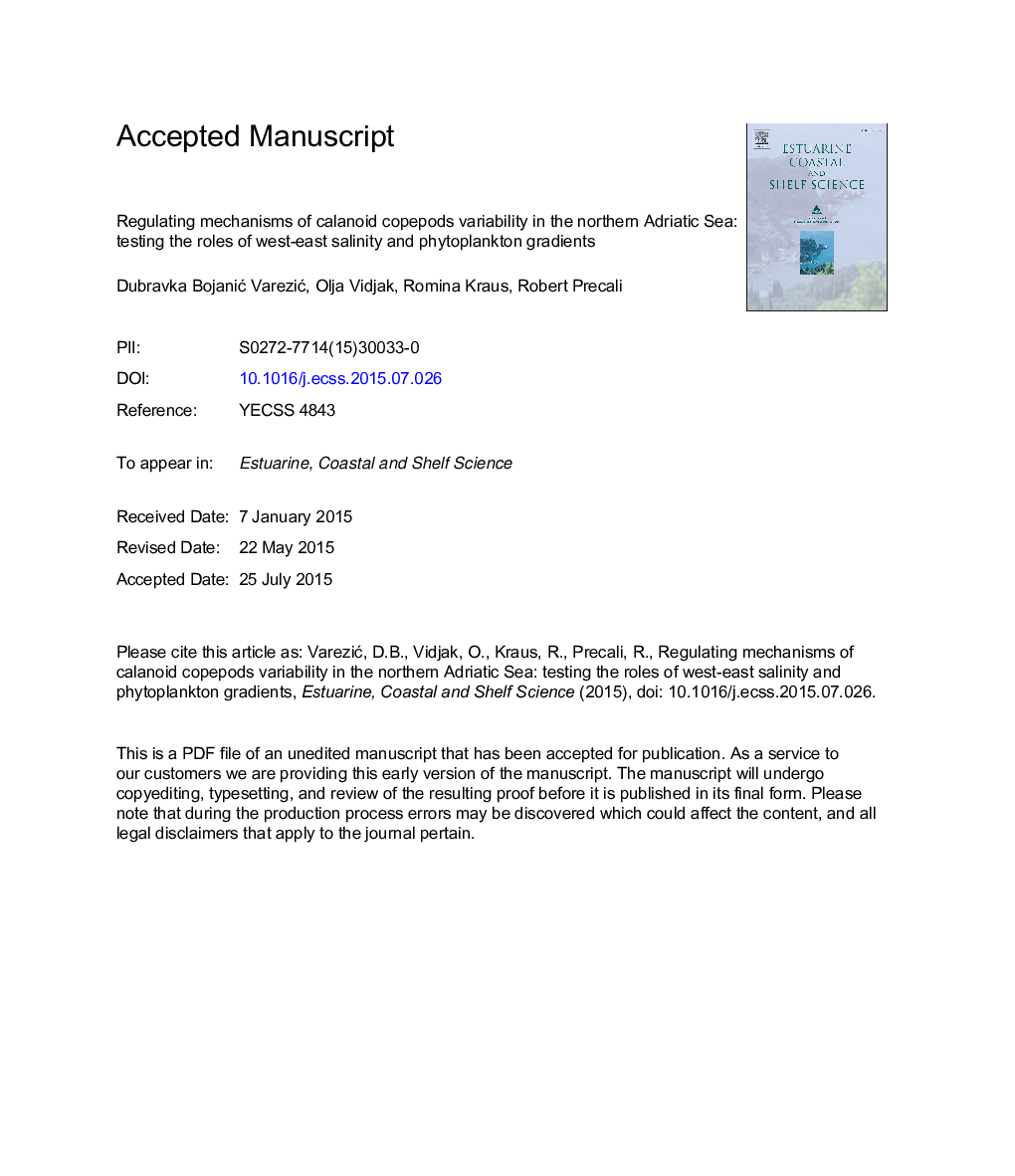| Article ID | Journal | Published Year | Pages | File Type |
|---|---|---|---|---|
| 6384711 | Estuarine, Coastal and Shelf Science | 2015 | 42 Pages |
Abstract
West-east variability of abundance and population structure of calanoid copepods was studied in 2002-2006 period at two stations in the northern Adriatic (NA), influenced to a different degree by the freshwater discharge of the Po River and regional circulation pattern shaped by the Istrian Coastal Countercurrent (ICCC) and Eastern Adriatic Current (EAC). Species-specific calanoid distribution and abundances were related to concurrently obtained salinity, temperature, Po River discharge and phytoplankton data. Significant differences between stations were determined for salinity, phytoplankton biomass and abundance, total calanoid density, total number of species and Shannon-Wiener biodiversity. The paper is especially concentrated to extremes in Po discharge recorded during the investigated period, which are discussed with respect to the observed variability in plankton components at each investigated station. At the western station, the proximity of the freshwater sources and consequent nutrients load was strongly coupled to the phytoplankton cycle and more tightly reflected in the calanoid abundances, whereas at the eastern station this link was appreciably weaker. Analysis of the community structure revealed the lack of true discriminating species between stations, while fairly stable pattern of occurrence and relative abundances was recorded for six key calanoid species (Pseudocalanus elongatus, Paracalanus parvus, Acartia clausi, Ctenocalanus vanus, Temora longicornis and Centropages typicus) at both sites. The role of EAC was significant in transport of open middle Adriatic species into the NA, which were more frequently recorded at the eastern station and extended their areal westwards more often in winter due to strengthening of the EAC.
Related Topics
Physical Sciences and Engineering
Earth and Planetary Sciences
Geology
Authors
Dubravka BojaniÄ VareziÄ, Olja Vidjak, Romina Kraus, Robert Precali,
